Meet the Van Olsts, and their famous stallion, Negro, a son of Ferro.
“Negro has been the big thing behind our success, he made us… Negro himself, then with his breeding, with the sons and also with the broodmares, he is fantastic the way he is stamping his progeny. He is a once-in-a-lifetime horse. We are very lucky to have him.”
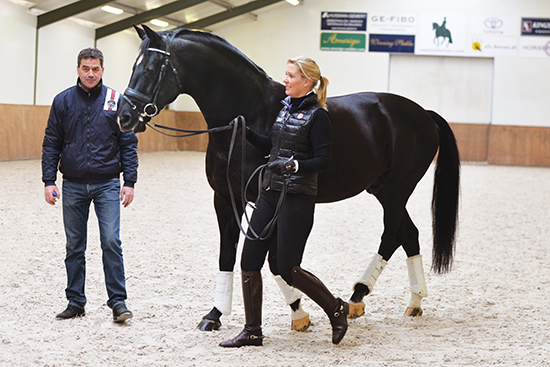 Story by Christopher Hector & Photos by Roslyn Neave
Story by Christopher Hector & Photos by Roslyn Neave
Gert Jan and Anne Van Olst are the ‘power couple’ of Dutch dressage. Anne has been a regular member of Danish dressage teams at Games and WEGs, while Gert Jan runs a sophisticated breeding operation and a cutting edge stallion station. Like a couple of the key players in Dutch dressage breeding, Gert Jan started out as a jumping man, but married into the dressage world. Before that he stood a couple of the real showjumping stallion stars, including the last son of Almé…
“I had Animo, I had Andiamo, we had some quite good jumping horses because that was my first thing… We still have a very good son of Andiamo – Dynamo. Jumping is more and more complicated, if you really want to do both things very well, it is too much.”
Was it also that you saw the market was changing and that there was a big market for dressage horses?
“You could feel that was coming, that it was going to be a very big and very interesting market. Still I would say that the jumping market is bigger, more clients, more riders, and also with the prizemoney, jumping horses are more expensive. The big difference between jumping and dressage is that I can sell a nice three-year-old ridden dressage horse, and that is important to me – to be able to sell 70% of my three-year-olds. With jumping horses, they want them, but they want them ridden in the ring, six, seven years old. Yes, the prices are big, but you have to spend a lot of time with them, and take them to shows, that’s the difference between the two markets.”
Anne and Negro competing in 2003 at FEI level
The star of the stallion barn – and he knows it – is Negro…
“Negro was the big thing behind our success, he made us… Negro himself, then with his breeding, with the sons and also with the broodmares, he is fantastic the way he is stamping his progeny. He is a once-in-a-lifetime horse. We are very lucky to have him.”
“He is twenty-years-old but he is doing very well, look, he has the expression in his eyes of a three-year-old. He has been unbelievable value for us, a lot of top sons and daughters. Valegro is of course, the best.”
Does he need a special mare?
“He succeeds best with the modern mares, like the good Jazz mares, he brings the strong back, the good hind legs, but he does best with a big mare, and a modern mare. Not a lot of blood, but with some blood. But he brings sport horses from all kinds of mares, if you see the mother of Valegro, it is not a very modern mare, he brings the sport – but to have a nice looking horse, you need a little bit the blood mare. In the beginning, Negro had to make do with all sorts of mares when he had to prove himself, but now he is getting better and better mares so it is easier for him.”
Lord Leatherdale, gives looseness, presence and front
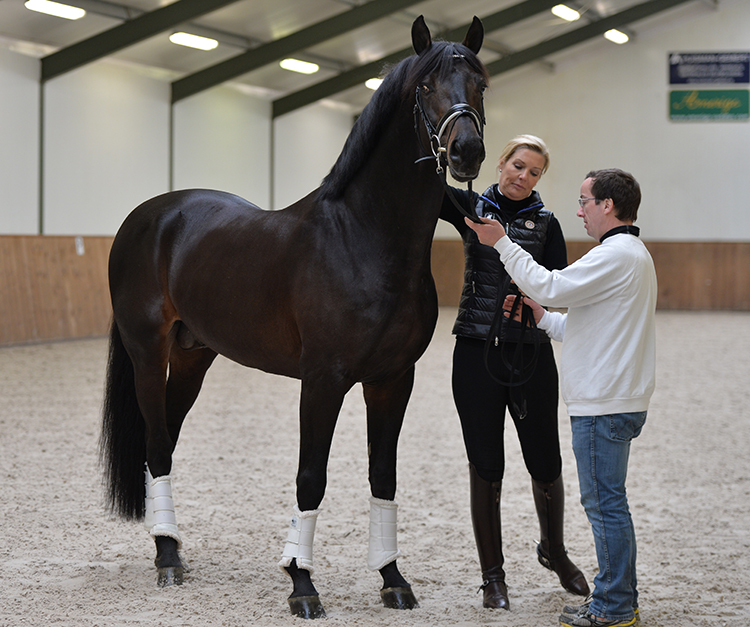
To compliment the blood of Negro, the Van Olsts went to Germany where they found the Rheinlander, Lord Leatherdale – by Lord Loxley out of a Ferragamo mare…
“In Holland we had many sons and daughters of Jazz and Krack and their lines, so we needed new blood, that’s why we bought Lord Leatherdale. The other reason was that I thought his good things were fitting quite well on the good things of Negro. We had a lot of Negro mares, and he was a nice stallion to combine with the Negro mares. Lord Leatherdale gives a lot of looseness, and a lot of presence and a lot of front, those things he brings very well to the Negro mares, they are mostly a little bit more closed, having a lot of power and missing a little bit of suppleness when it comes to the lateral movements. The strong things of Negro are very nice combined with Lord Leatherdale, and it has been a successful combination: Chippendale, Everdale, we have Fairytale, we have Glamourdale, all from this combination.”
For Gert, the stallions have to follow the modern practice and prove themselves in the sport, that’s where having an international dressage rider for a wife comes in handy…
“We sell semen, all through Holland and Europe, and next to the stallion business, we have our sports stable. Anne manages the sports stable. Of course we want our own stallions to go into the sport, because they need to do it themselves if you expect them to give it to the offspring. We spend a lot of time and energy competing with our stallions.”
Anne and Exquis Clearwater competing for Denmark at the European Championships
“We have our competition barn with Anne’s Grand Prix horses. It is very important for us to go to competitions, that’s where you meet new people, keep your contacts, then you can market the stallions. That’s why we always try to keep a few Grand Prix horses to give us an opportunity to go out and market our horses.”
“It’s very important for us to know what the stallion is doing himself. You can’t expect them to give it to their offspring if they don’t show it themselves – it’s important to have the stallions in sport to see what they can do, to see their attitude, their willingness to work, the talent and the soundness, all those things are very important in the modern breeding scene. We work the stallions every day, and we want them to compete – so first of all we want the good types, but they also need the quality to compete in the big ring. Chippendale is eight now and he is ready to do Grand Prix, he has been out already to a few international shows doing Prix St Georges, he is also breeding very well – last year we had the first three-year-old offspring and his son, Giovanni won the KWPN performance test in the Spring – so he has been successful with his first offspring.”
Giovanni, by Chippendale
By now we were standing in the indoor as Chippendale and Glamourdale do their thing…
“They have a double career, they breed in the morning, and in the afternoon they are worked. They are breeding stallions, but you see their temperament, they are very easy – easy to collect, they are very cooperative, which is very important for a modern dressage horse.
What mares is Chippendale working best with?
“The only thing you have to take care of with Chippendale is the size, what he is bringing is very good conformation, very good strong backs, he has a strong back himself and it comes through with the offspring. You cannot put a small mare to him.”
Chippendale, good conformation and strong backs
And with Everdale?
“Everdale is breeding big, Everdale is breeding chic horses, he brings the blood to the mares, the sharpness, the nice expression, and the big, long lines. The older more classical type of mares fit very well with Everdale. If you have an old fashioned mare, he will modernize the progeny and still give the movement. He is 174, 175cm, and he is also breeding big. Chippendale is 169, 170cm.”
“His breeder came here with the mother and the foal to breed the mare again, right when Glamourdale came off the trailer you could see he was something special, nice expression. The mother has a very nice pedigree, she is a full sister to a Grand Prix horse in England. He did the test last year, and bred quite a few mares.”
“We froze the semen of Glamourdale last winter, so now he will be available all over the world.”
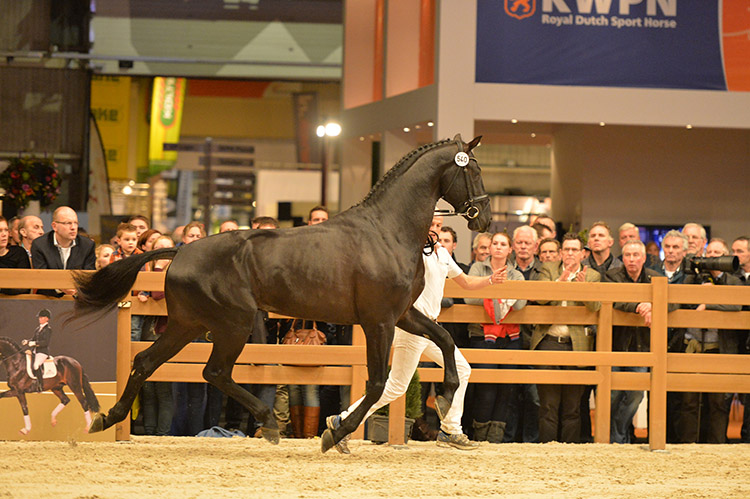
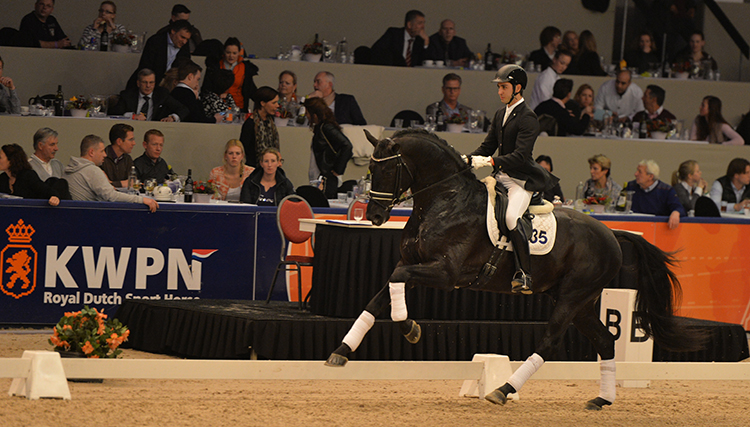
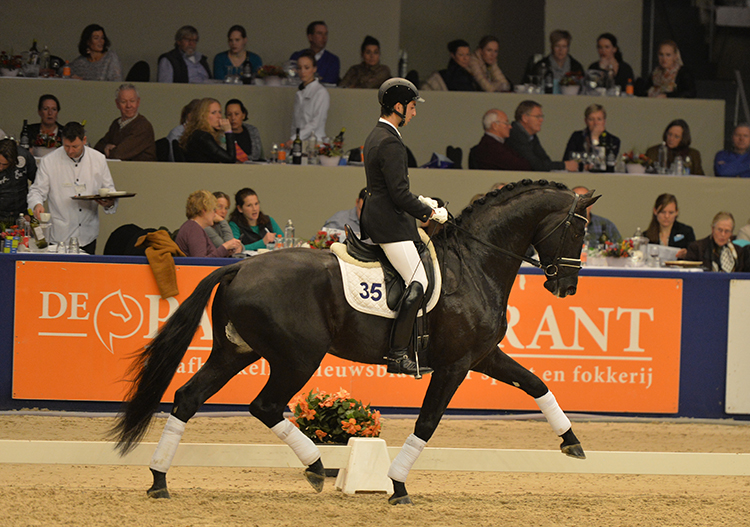 Glamourdale, winning the licensing and coming back the next year to let everyone see how he has developed
Glamourdale, winning the licensing and coming back the next year to let everyone see how he has developed
And the mares for him?
“Glamourdale is special in the connection he has in the back, he has a very strong back. He is very nice and uphill, he has an unbelievably nice canter, so he could probably do with a little bit more blood mares, I think.”
And the stallion and sport barns go hand in hand with a fairly massive breeding program:
“We are also rearing young horses. Every year we buy quite a lot of foals because that is important for us, every year we need new horses to sell, to bring to the stallion show, we get them out of all the foals we buy each year. This spring we brought in about 100 foals, mostly stallion foals, 20% mare foals. We raise them and then when they are three-years-old, we sell them, or keep a few to go on with.”
“We also have about 20 broodmares, but there is too much happening here, horses coming in and out, so we keep them at another place, more for quarantine purposes and to keep them infection free. Once a year, when the foals are old enough, we bring them here to be reared. We have another place in the north for the foals that are good enough horses for the sport. We keep them up there.”
“All the young horses are checked on x-rays when they are 18 months old. From the moment they come to us, we select and select. We have a lot of staff and expenses, so it is not worth keeping ‘normal’ foals.”
“The yearlings are sent out to fields around here, and they come back around November 1st, then we x-ray them all, then we have the group that still has the potential to be selected for the stallion show. We have another group of 25 in the north, they have been selected on x-rays, but they are not good enough on pedigrees to go to the stallion show, so they are going to be castrated in the spring as
two-year‑olds.”
Diego / Lord Leatherdalde / Almox Prints, approved
Gert Jan is a fan of ET, but is careful with the recipient mares he uses:
“We have a small lab for the vet to pick up embryos, we do quite a lot of ET. For us it is quite useful with the three-year-old mares that are very nice, to take the embryos out so that we can keep riding them. The black stallion by Diego that was approved this year, he is out of one of our young mares, one of our ET products.”
What sort of recipient mares are you using?
“We use mostly Warmblood mares, we really are very careful with the recipient mares, we like to have them not too small, and also social with the other mares, then they have to be big enough. Trotters are small and not perfect for recipient mares – in fact we use quite nice mares, that’s important.”
“We can do everything here from foals to Grand Prix, that’s our system, and it is very important for us. All the horses come out of our own system – horses like Valegro. With quite a lot of breeders we have a partnership, they phone me when they have the foal, and we talk about the new stallion to use with the mare. We do that with a group of about 200 / 250 mares. Some breeders have ten, some, one or two. With those 250 mares, I will buy the foals and work with them. They phone at the funniest time in the night, four o’clock in the morning – YEAH HE’S HERE! We try to create a win, win situation. It means sometimes you have to buy foals that are not as good as you want, but next you get a good one.”
Of course, no visit to the Van Olst operation is complete without mention of their most famous product, Valegro:
“I bought him as a foal, he came in when he was four-months-old. We took him to the stallion licensing, and they didn’t want him as a stallion. We gelded him and sold him to Carl Hester, and after that, the successful story started. The Licensing Commission didn’t want him, but okay Negro was not so well known, and Valegro is not the most modern type… if you knew what was going to happen, you wouldn’t have gelded him, but that’s how things go. If he’d been a stallion then probably he wouldn’t have had the chance to go so far in the sport.”
“We took embryos from his mother but that was quite difficult. She had a foal this year, a full-sister to Valegro, and we bred her again but she lost it. We will try again but she is about twenty-years-old.”
We say Valegro was not such a modern type, Totilas is not such a modern type, but they are great Grand Prix horses, are we breeding for the wrong type if we want Grand Prix performance?
“I don’t think so, but that is a discussion that has been going on for a long time. The Grand Prix horses you mentioned – like the De Niro sons – are not the nice modern types. There was a time when the two types were far apart, but these two worlds are coming closer. People on the stallion commission like Wim Ernes who know the sport, and know what is going on, they bring those two worlds together, the big sport and the breeding thing, is coming more and more together. They know what is asked in the Grand Prix ring and they try to bring that in at the stallion selection.”
So we should look more for the old fashioned type?
“Especially for the hind legs, we should look to the connections, the good connection to the back, and the temperament of course is more and more important. For a certain while we have been too much over the top, focusing on long legs and uphill and all those things, and now we are seeing what you really need in the ring, and it is coming closer together.”
We visited Van Olst Horses as part of the KWPN organized tour for foreign visitors to the KWPN stallion show in s’Hertogenbosch. Our thanks to the crew at the KWPN for organizing the tour.
Breeding a top-level performer? You need proven bloodlines. Like Fürsten Jazz, one of the many top European stallions available from IHB. Go to: www.ihb.com.au
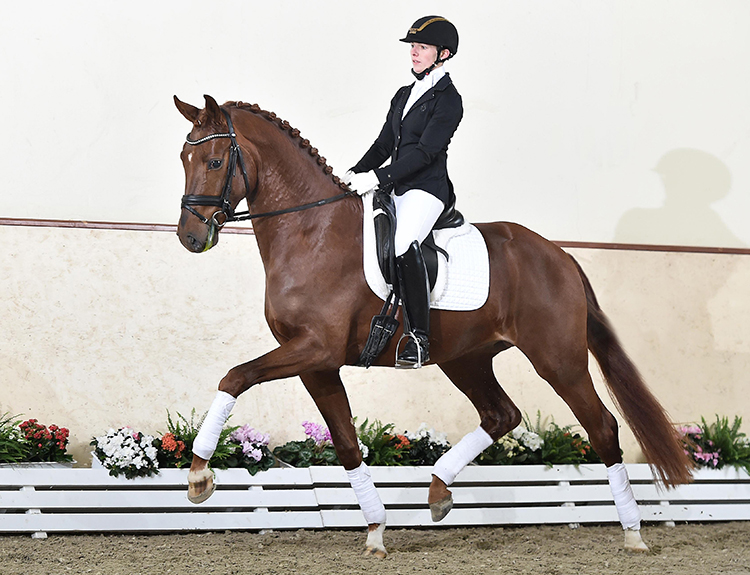


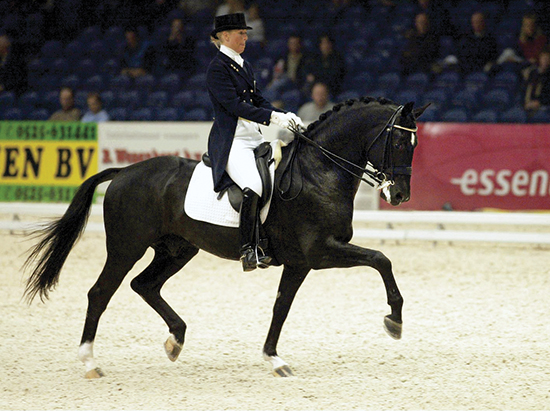
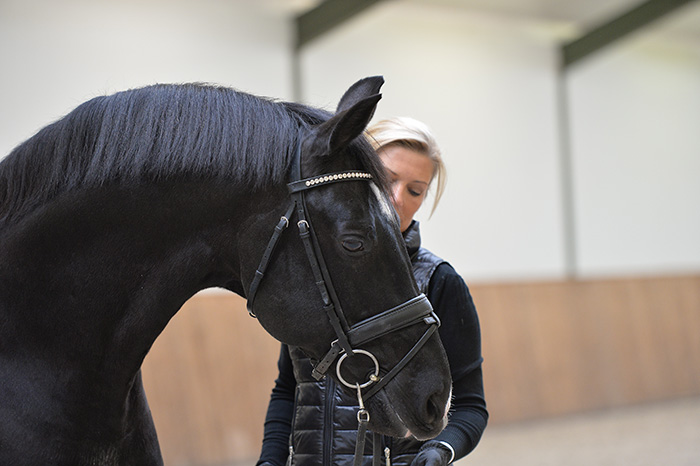
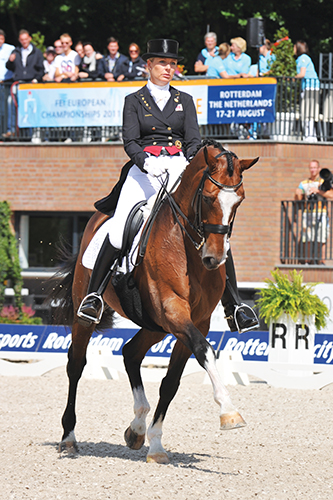
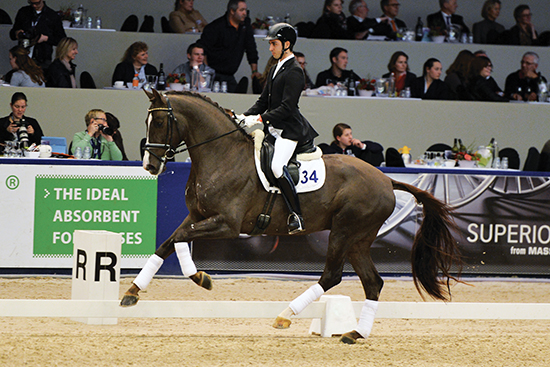
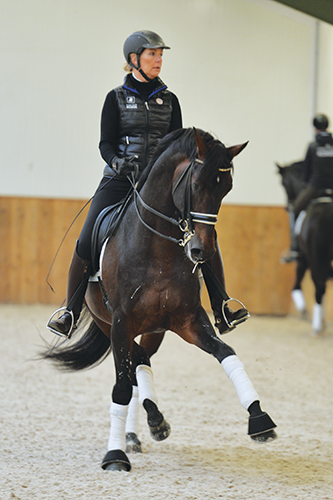
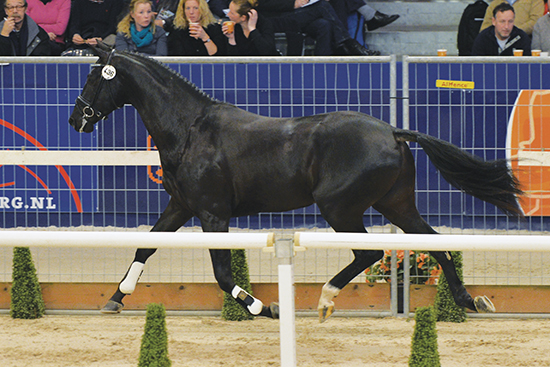
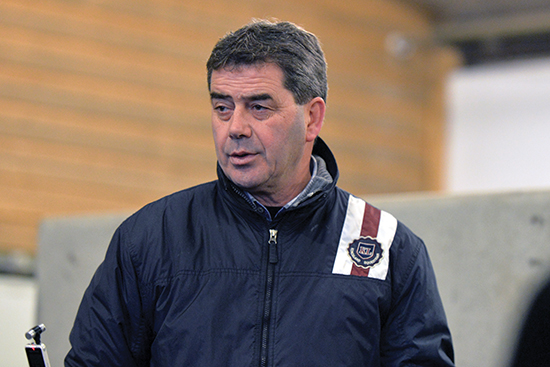
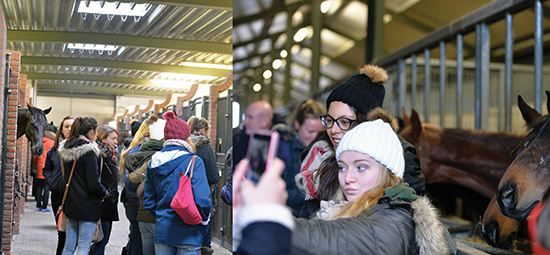

hi gert and anne ,I would like to purchase a couple of ferro foals from you .ive dealt with you before back in the day ,I imported ferro seaman and was booked to come to Holland with my mare to embryo transfer from ferro ,but he died 3 weeks before I was due.i would be interested in other quality foals as well.but my heart is with ferro mainly.look forward to your response .thanks mark;